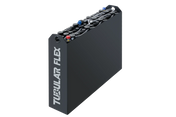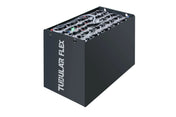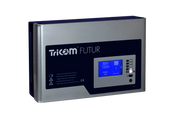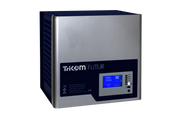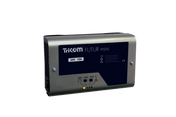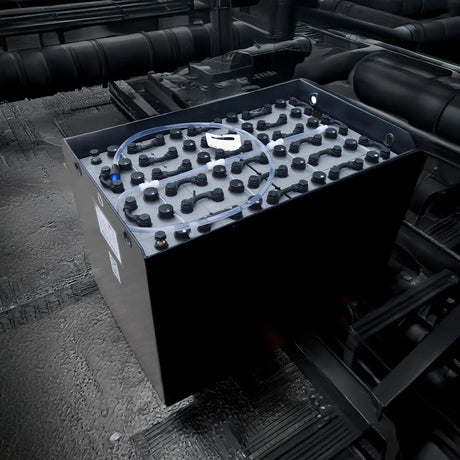The reuse of used forklift batteries as stationary energy storage devices is an important component of the circular economy. This guide provides a concise and easy-to-understand guide through technical assessments, economic viability, application scenarios, market trends, and concrete action steps. It is aimed at energy and logistics professionals as well as interested readers seeking a well-founded overview.
What does Second Life mean for forklift batteries?
In a vehicle or industrial truck, a battery's first life often ends when its usable capacity drops noticeably and operational performance requirements can no longer be reliably met. This doesn't mean the battery is unusable. In stationary applications, other criteria apply. With appropriate testing, reconditioning, and system integration, modules can continue to be used effectively for many years.
The State of Health serves as a guideline. If it's around 80 percent or higher , the prospects for a viable Second Life are good. Below this level, recycling becomes the priority.
SoH and testing procedures explained clearly
The State of Health summarizes the capacity, performance, and electrical properties of a battery compared to its new state. Important test parameters include capacity, internal resistance, and thermal behavior.
Modern rapid tests such as electrochemical impedance spectroscopy enable a very rapid initial assessment. This saves costs and enables high throughput. Robust capacity and safety tests at the module and system level follow for final approval.
Step by step to the Second Life approval process
1. Entrance examination
Visual inspection, module identification, document review, and safety check. Any obvious damage is rejected.
2. Rapid test
Brief testing using EIS or comparable methods. Selection of suitable modules for detailed testing.
3. Detailed test
Capacitance measurement, internal resistance, behavior under load, temperature control. The result is a clear performance profile.
4. Classification
A suitable for Second Life, B for repair or repurpose, C for recycling.
5. System integration
Integration into a secure storage system with battery management , fuses, relays, communications, and energy management. Standards and fire protection are adhered to.
6. Final inspection
Functional testing, type testing, and safety acceptance. Documentation for operation and warranty.
Economic viability of second-life batteries
Second Life pays for itself through lower acquisition costs, deferred disposal, and leveraged revenue potential. Realistically, system costs are 20 to 30 percent lower than new storage, depending on the depth of treatment and project size.
Determine residual value
Restwert = Neubatteriepreis × (SoH/100) × Marktfaktor × Technologiefaktor
The market factor reflects supply, demand, and application. Typical ranges are between 0.3 and 0.7. The technology factor takes cell chemistry, format, and system compatibility into account.
Net present value and TCO
Barwert BW = Z × b(T, q, r)
with b(T, q, r) = (1 - (r/q)^T) / (q - r), r ≠ q
Z = annual payment sequence, T = useful life, q = discounting, r = price change
The total cost of ownership includes system purchase including treatment, installation, and permits; operation, maintenance, and monitoring; and dismantling and disposal. Savings can be achieved through peak shaving, self-consumption from photovoltaics, and possible grid services.
The most important application scenarios
Commercial storage
Peak shaving reduces power prices. Optimized self-consumption utilizes photovoltaic surpluses. Emergency power keeps critical systems running.
Network services
Provision of control energy, support for grid stability and buffers for charging hubs and rapid charging stations.
Decentralized systems
Intermediate storage in microgrids, temporary supply on construction sites and at events.
Private energy storage
Second-life batteries can also be used effectively in private homes. Especially when combined with photovoltaic systems, they enable a significant increase in self-consumption and cost reduction . Typical applications include:
- PV home storage : Use of excess solar energy for the evening or night
- Emergency power supply : Protection of critical consumers in the event of a power failure
- Charging support : Intermediate storage for charging e-bikes or electric cars
Important: In the private sector, safety and certification play a key role. Systems should always be offered as a tested, complete solution to avoid risks during installation and operation.
Practical examples and market players
| Project or company | Battery origin | Capacity or performance | Application | Special features | Status or year |
|---|---|---|---|---|---|
| Batteryloop Gothenburg | Toyota forklift, 800 modules | 155 kW, 120 kWh | Peak shaving, charging infrastructure, grid service | 55 charging points, part of a recycling group | In operation 2022 |
| Voltfang | Traction batteries from vehicles | 33 to 1000 kWh modular | Commercial storage, peak shaving | AI-powered evaluation, 10-year warranty | Series solutions 2023 to 2024 |
| EnBW with Audi Heilbronn | Audi e-tron test fleet | around 1 MW per container | Grid stabilization, test operation | Long-term observation of aging | Pilot 2024 to 2025 |
| BMW with Vattenfall Leipzig | BMW i3 batteries, 700 modules | 2 MW, 2 MWh | Control energy, wind coupling | Early flagship project | In operation 2016 |
| Toyota Sweep System Japan | Hybrid and electric car batteries | 485 kW, 1260 kWh | Grid feed-in, test | Reuse of onboard inverters | In operation 2022 |
| e.battery systems | E and hybrid car batteries | 260 kWh to several MWh | Industry and own consumption | Around 30 percent cost reduction | Market launch 2023 |
Realistically assess risks and limits
Second-life systems aren't a sure-fire success. Heterogeneous inventories make bundling into uniform strings difficult. Testing and processing costs are significantly significant. Furthermore, falling prices for new battery systems are impacting margins. Clean data, standardized processes, and professional monitoring are therefore crucial.
Environmental impact and sustainability
Second Life extends the useful life of valuable materials and postpones the point of recycling. The outcome is particularly positive when Second Life systems replace new storage rather than simply creating additional capacity. This saves resources and emissions along the supply chain and promotes sustainability .
View of the market and the future
As electromobility grows, the pool of available traction batteries is expanding. Digital battery passports and AI-based diagnostics improve transparency and planning. Modular architecture facilitates the integration of different battery technologies. Attractive niches are opening up for suppliers with good access to inventory and efficient testing processes.
Calculation models in practice
How to use the residual value formula
Set the current SoH, a realistic market factor, and the technology factor. Check sensitivities by calculating the factors from both a conservative and an optimistic perspective. This will give you viable price limits for purchasing and selling.
Apply net present value and TCO
Calculate the annual payment sequence from savings from peak shaving, optional revenue from grid services, and all ongoing costs. Use conservative assumptions regarding service life and electricity prices to avoid surprises during operation.
Concrete recommendations for your everyday project work
For battery owners
Test early and determine the SoH before the end of the first life cycle. Document usage history and secure sales through partnerships.
For Second Life providers
Invest in rapid testing procedures , build modular systems, and address commercial applications with reliable service concepts.
For users
Conservatively plan for service life , consider redundancy in the design, and rely on professional maintenance . Monitoring reduces the risk of failure and protects your investment.
Conclusion
Second-life forklift batteries combines economic benefits with sustainable resource use . The key lies in thorough testing, clean integration, and transparent cost-benefit analysis. By following these fundamental principles, storage projects can be implemented reliably and efficiently.


